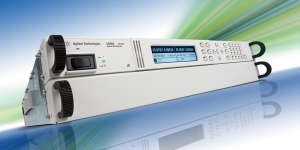May 1 2008
Agilent Technologies Inc. today introduced a modular solar array simulator that offers the most power (up to 1200W) in the smallest package (2U high). Designed for customers testing a satellite's power system, the Agilent E4360 solar array simulator allows R+D engineers, manufacturing engineers and system integrators to accurately simulate the I-V curve of a solar panel's array under various environmental conditions. In addition to the new standalone instrument, Agilent now provides an affordable, full turn-key solar array simulator system.

“Solar array simulator DC power supplies are core components of a satellite test system,” said Gary Whitman, vice president of Agilent's System Products Division. “As satellites get bigger and demand more power from their solar panels, there is a need for higher-power devices to simulate those higher-power solar panels. The E4360 satisfies this need by providing an affordable, high power, compact test solution.”
The Agilent E4360 is a dual output programmable DC power source that provides up to two outputs at up to 600W per output. It can accurately simulate the I-V curve of all types of solar arrays under varying environmental conditions such as eclipse, spin, rotation, age and temperature. It has the flexibility to operate in two ways. Users can:
- input the four key operational parameters (Voc, Isc, Vmp, Imp) needed for the solar array simulator to internally create an I-V curve of a solar array; or
- download a user-defined table for the I-V curve of the solar array.
This is the first solar array simulator to provide universal serial bus (USB 2.0), 10/100 Base-T Ethernet (LAN) and general-purpose interface bus (GPIB) interfaces as standard equipment, enabling easy, low-cost connectivity to a PC. The E4360 can also be remotely operated and monitored from any Web browser via a built-in Web server and graphical user interface.
The Agilent modular solar array simulator offers many system-ready features to simplify the programming and control of the instrument. The system software driver allows a single function call to set up and control multiple E4360s in a system. Multiple solar array simulators can be configured without writing a single line of code. Furthermore, a new capability simplifies parallel operation such that two outputs act as a single synchronized channel of twice the output current and power without having to write software to manage their interaction.
Agilent's affordable, full turn-key solar array simulator system -- the smallest available on the market -- is built on the Agilent E4360 modular solar array simulator platform. The modular architecture makes it easy to configure, re-configure and support this system since modules can be easily moved and replaced. The system's components include commercial-off-the-shelf instruments (COTS), a standard PC and standard interconnectivity (LAN, USB) for low-cost, easy support and reduced downtime. Agilent can design and customize this turn-key system to meet specific customer requirements including instruments, cabling and application-specific software.